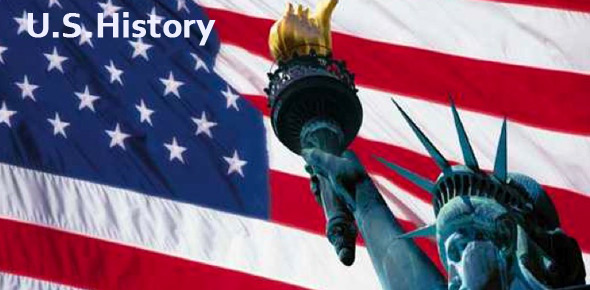US History 2 Chapter 13 Quiz

Let’s go back to the very beginning in this U. S. History quiz, as we discuss Native Americans, the Indian Wars, the cattle industry boom, the Great Plains and the Populist Party. See how you perform right now!
- 1.
The push for Native Americans to adopt European ways of life was
- A.
Maturation
- B.
Displacement
- C.
Assimiliation
- D.
Reintegration
Correct Answer
C. AssimiliationExplanation
The push for Native Americans to adopt European ways of life was assimilation. This means that there was a strong effort to make Native Americans conform to European cultural norms, values, and practices. This often involved forcing Native Americans to abandon their own traditions, languages, and religions, and instead adopt European customs and beliefs. Assimilation was seen as a way to "civilize" Native Americans and make them more like the European settlers.Rate this question:
-
- 2.
The battle that brought the Indian Wars to an end was
- A.
Wounded Knee
- B.
Ghost Dance
- C.
Custer's last stand
- D.
Sand Creek Massacre
Correct Answer
A. Wounded KneeExplanation
Wounded Knee is the correct answer because it was the battle that effectively ended the Indian Wars. It took place in 1890 and resulted in the massacre of hundreds of Lakota Sioux, including women and children, by the U.S. Army. This event marked the final major confrontation between Native American tribes and the U.S. government, leading to the surrender and forced relocation of many tribes. The battle of Wounded Knee is often seen as a tragic and symbolic end to the long and violent history of conflict between Native Americans and the United States.Rate this question:
-
- 3.
All these contributed to the cattle industry boom except
- A.
Railroads
- B.
Higher beef demand
- C.
The Chisholm Trail
- D.
The Oregon Trail
Correct Answer
D. The Oregon TrailExplanation
The Oregon Trail is not a factor that contributed to the cattle industry boom. The Oregon Trail was primarily used by pioneers and settlers to migrate to the western United States during the 19th century. It was not directly related to the cattle industry or the transportation of cattle. On the other hand, railroads played a crucial role in the cattle industry boom by providing a faster and more efficient means of transporting cattle to markets. The Chisholm Trail was a major cattle trail that facilitated the movement of cattle from Texas to Kansas, while higher beef demand also drove the growth of the cattle industry.Rate this question:
-
- 4.
The main reason for the rapid settlement of the Great Plains was
- A.
Free land
- B.
Cash incentives
- C.
The buffalo slaughter
- D.
Agricultural inventions
Correct Answer
A. Free landExplanation
The main reason for the rapid settlement of the Great Plains was the availability of free land. The Homestead Act of 1862 provided individuals with the opportunity to claim up to 160 acres of land for free, as long as they improved it and lived on it for a certain period of time. This attracted many people, including immigrants and farmers, who were looking for new opportunities and a chance to own their own land. The promise of free land incentivized settlers to move to the Great Plains and played a significant role in the rapid settlement of the region.Rate this question:
-
- 5.
The collaps of the Populist Party was most influenced by the
- A.
Panic of 1893
- B.
Defeat of Bryan
- C.
Free silver policy
- D.
Gold bug Democrats
Correct Answer
B. Defeat of BryanExplanation
The collapse of the Populist Party was most influenced by the defeat of Bryan. This is because Bryan was the party's presidential candidate in the 1896 election, and his loss signaled a significant blow to the party's momentum and support. Bryan's defeat meant that the Populist Party was unable to gain sufficient political power and influence, leading to its decline and eventual collapse. Without a strong leader like Bryan, the party struggled to maintain its relevance and attract voters, ultimately leading to its demise.Rate this question:
-
Quiz Review Timeline +
Our quizzes are rigorously reviewed, monitored and continuously updated by our expert board to maintain accuracy, relevance, and timeliness.
-
Current Version
-
Mar 19, 2023Quiz Edited by
ProProfs Editorial Team -
Jul 13, 2010Quiz Created by
Wolfpack71
- Age Of Exploration Quizzes
- Asian History Quizzes
- Australian History Quizzes
- Black History Quizzes
- Canadian History Quizzes
- Chinese Dynasty Quizzes
- Chinese History Quizzes
- Civilization Quizzes
- Colonialism Quizzes
- Colonization Quizzes
- Elizabethan Era Quizzes
- European History Quizzes
- French Revolution Quizzes
- Georgia History Quizzes
- Gothic Quizzes
- History Midterm Quizzes
- Indian History Quizzes
- Mesopotamia Quizzes
- Middle Ages Quizzes
- Modern History Quizzes
- Philippine History Quizzes
- Renaissance Quizzes
- Revolution Quizzes
- Roman History Quizzes
- Slavery Quizzes
- The Rise Of Hitler Quizzes
- United States Constitution Quizzes
- War Quizzes
- Westward Expansion Quizzes
- World History Quizzes
- World War I Quizzes
- World War II Quizzes
 Back to top
Back to top


